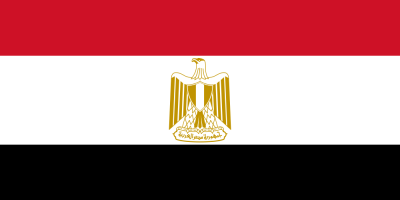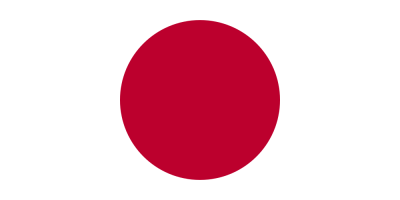Sri Lanka flag color codes features a golden lion holding a sword on a maroon background next to four golden bo leaves, each in one corner. The Sri Lanka flag color codes in various formats convey the specific shades of the flag elements. Understanding the Sri Lanka flag color codes like HEX, RGB, PANTONE, HSL, CMYK, HWB, and NCOL allows proper display and reproduction of this important national symbol. This article provides the Sri Lanka flag color codes in the common design color formats. With the Sri Lanka flag color codes, you can accurately represent the colors of this vibrant flag.
Table of Contents
What are the colors of Sri Lanka flag?
The colors of the Sri Lanka flag are:
- Maroon – The background color is maroon, which represents the country’s Sinhalese majority population.
- Saffron – The stripe at the left side of the flag is saffron, which represents the Sri Lankan Tamils and other minority groups.
- Gold – The lion symbol and the four bo leaves in the corners are gold in color. The gold represents prosperity and Buddhism, which is the main religion in Sri Lanka.
- Green – The sword held by the lion is green in color. The green stripe represents the country’s Muslim minority population.
So in summary, the main colors are maroon, saffron, gold, and green. The maroon and saffron stripes alongside the green and gold symbols represent the major ethnic and religious groups of Sri Lanka.
Sri Lanka flag color codes & Color Names:
GREEN
| Color Model | Values |
|---|---|
| HTML | #007A4D |
| HEX | 0, 122, 77 |
| RGB | RGB(0, 122, 77) |
| PANTONE | 342C |
| HSL | HSL(146, 100%, 24%) |
| CMYK | 100%, 0%, 37%, 52% |
| HWB | HWB(146, 0%, 52%) |
| NCOL | – |
YELLOW
| Color Model | Values |
|---|---|
| HTML | #FFD100 |
| HEX | 255, 209, 0 |
| RGB | RGB(255, 209, 0) |
| PANTONE | 116C |
| HSL | HSL(48, 100%, 50%) |
| CMYK | 0%, 18%, 100%, 0% |
| HWB | HWB(48, 0%, 0%) |
| NCOL | – |
MAROON
| Color Model | Values |
|---|---|
| HTML | #8B0000 |
| HEX | 139, 0, 0 |
| RGB | RGB(139, 0, 0) |
| PANTONE | 188C |
| HSL | HSL(0, 100%, 27%) |
| CMYK | 0%, 100%, 100%, 45% |
| HWB | HWB(0, 55%, 45%) |
| NCOL | – |
What is the meaning of colors in the Sri Lanka flag?
Here are the meanings of the colors in the Sri Lanka flag:
- Maroon – Represents the Sinhalese ethnic majority in Sri Lanka.
- Saffron – Symbolizes Sri Lankan Tamils and other minority ethnic groups.
- Gold – Stands for prosperity and Buddhism, the predominant religion in the country.
- Green – Represents the Muslim minority population of Sri Lanka.
- Lion – Symbolizes bravery, strength, and sovereignty. The lion holding a sword depicts vigilance and warrior nature to protect the nation.
- Bo Leaves – The four bo leaves at the corners represent Buddhism and its influence in Sri Lanka. They are derived from the sacred Bo tree, also called Sri Maha Bodhi.
- Sword – The sword held by the lion symbolizes sovereignty, authority, and the lion’s intention to defend the nation.
So in summary, the colors and symbols highlight the major ethnic groups, Buddhism, prosperity, and sovereignty of Sri Lanka. The flag reflects the nation’s heritage through its varied colors and meaningful symbols.
Explore More Flag Colors:
- Niger Flag Color Codes
- Guinea Flag Color Codes
- Aruba Flag Color Codes
- Dominican Republic Flag Color Codes
FAQs: Frequently Asked Questions:
Is Sri Lanka a rich or poor country?
Sri Lanka is considered a developing country with a mixed economy. The country has made progress in various sectors, such as education and healthcare, and has seen economic growth in recent years. However, like many other nations, it faces challenges such as income inequality and external debt.
What is the religion of Sri Lanka?
Sri Lanka is a multi-religious country with a diverse religious landscape. The major religions practiced in Sri Lanka include:
Buddhism: The majority of the population in Sri Lanka adheres to Theravada Buddhism, which is the oldest surviving branch of Buddhism. Buddhism has a significant influence on the culture and traditions of the country.
Hinduism: Hinduism is practiced by a sizable minority, particularly among the Tamil ethnic group in the Northern and Eastern provinces of Sri Lanka.
Islam: Islam is followed by a significant minority, mainly among the Moor and Malay communities. They are primarily Sunni Muslims.
Christianity: Christianity has a presence in Sri Lanka, with both Roman Catholic and Protestant communities. The Christian population includes Sinhalese, Tamils, and Burghers.
For which Sri Lanka is famous for?
Sri Lanka is famous for several aspects that make it a unique and culturally rich destination. Some of the things for which Sri Lanka is particularly well-known include:
Natural Beauty: Sri Lanka boasts stunning landscapes, including pristine beaches, lush tea plantations, scenic mountains, and diverse wildlife. The country’s natural beauty attracts tourists from around the world.
Tea: Sri Lanka is one of the world’s largest tea exporters, and Ceylon tea is renowned for its quality and flavor. The central highlands of Sri Lanka are dotted with picturesque tea estates.
Cultural Heritage: The country has a rich cultural heritage with ancient cities, historical ruins, and sacred sites. Sigiriya, an ancient rock fortress, and the city of Kandy, known for the Temple of the Tooth Relic, are UNESCO World Heritage Sites.
Wildlife: Sri Lanka is home to a variety of wildlife, including elephants, leopards, and a wide range of bird species. National parks like Yala and Wilpattu offer excellent opportunities for wildlife safaris.
Ayurveda: Sri Lanka has a long tradition of practicing Ayurveda, an ancient system of medicine. Visitors can experience Ayurvedic treatments and wellness programs in various resorts and spas.
Cuisine: Sri Lankan cuisine is flavorful and diverse, with a mix of spices and influences from Indian, Dutch, Portuguese, and Malay cuisines. Dishes like rice and curry, hoppers, and kottu roti are popular.
Do you need a visa for Sri Lanka?
Sri Lanka typically require a visa to enter the country. However, visa requirements can change, and it’s crucial to check the latest information from official sources.
As of my last update, Sri Lanka offers different types of visas, including:
Electronic Travel Authorization (ETA): This is an online visa system that allows travelers to obtain a visa before arrival. It is applicable for short visits and tourist purposes.
Visa on Arrival: Some countries are eligible for a visa on arrival, which allows travelers to obtain a visa when they arrive in Sri Lanka. However, this option is not available to all nationalities.
Regular Visa: In some cases, travelers may need to apply for a visa through the Sri Lankan diplomatic mission in their home country before traveling.
What is Sri Lanka main income?
key contributors to Sri Lanka’s income include:
Tourism: The tourism industry is a significant source of revenue for Sri Lanka. The country attracts visitors with its natural beauty, cultural heritage, historical sites, and diverse landscapes.
Export of Goods: Sri Lanka is known for its exports, with tea being one of the major commodities. Other notable exports include garments and textiles, rubber products, precious stones, and seafood.
Remittances: Foreign remittances from Sri Lankan expatriates working abroad contribute significantly to the country’s income. Many Sri Lankans work overseas and send money back to their families.
Apparel and Textiles: The garment industry is a crucial part of Sri Lanka’s economy, providing employment and generating foreign exchange through exports of apparel and textiles.
Agriculture: Agriculture, including the cultivation of crops such as rice, fruits, and vegetables, plays a vital role in the country’s economy, providing employment to a substantial portion of the population.
Services Sector: The services sector, including banking, finance, and information technology, contributes significantly to the country’s income.
Is it safe to go to Sri Lanka?
safety conditions can change, and it’s essential to stay informed about the latest travel advisories before planning a trip. Here are a few considerations:
Security Situation: Sri Lanka has faced periods of political unrest and civil conflict in the past, but the situation has improved significantly in recent years. It’s advisable to check the latest security updates and travel advisories from official sources before planning a visit.
Natural Disasters: Sri Lanka is susceptible to natural disasters such as earthquakes, floods, and tropical storms. Travelers should be aware of seasonal patterns and any potential risks during their planned visit.
Health Concerns: Like any travel destination, it’s important to be aware of health considerations. Checking for any recommended vaccinations and being cautious about food and water safety can help prevent health issues during your stay.
Local Customs and Laws: Familiarize yourself with the local customs and laws to ensure a respectful and safe experience. This includes respecting religious sites, cultural practices, and following local regulations.
COVID-19 Pandemic: Given the global situation, it’s crucial to check for any travel restrictions, quarantine requirements, or health and safety protocols related to the COVID-19 pandemic. This information can change rapidly, so it’s important to stay updated.
Are Sri Lanka Muslims?
Yes, Sri Lanka is home to a Muslim community. Islam is one of the major religions in the country, practiced by a significant minority of the population. The Muslim community in Sri Lanka consists of various ethnic groups, with the majority being the Moors, who are descendants of Arab traders.
Do Buddhists eat beef?
Buddhism does not have a strict dietary code that prohibits the consumption of specific meats, including beef. However, dietary practices can vary among Buddhist traditions and individual practitioners.
In Theravada Buddhism, which is the predominant form of Buddhism in countries such as Sri Lanka, Thailand, Myanmar, and Cambodia, there is no specific prohibition against eating beef. Many Theravada Buddhists follow a vegetarian or predominantly vegetarian diet, but this is often a personal choice rather than a strict religious requirement.













